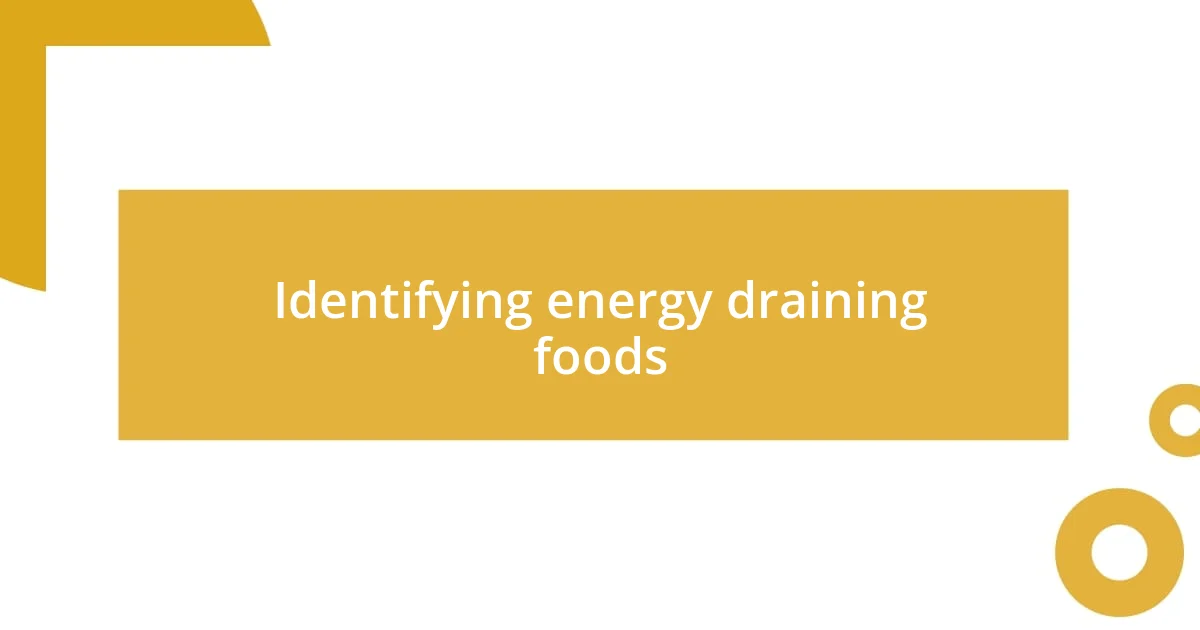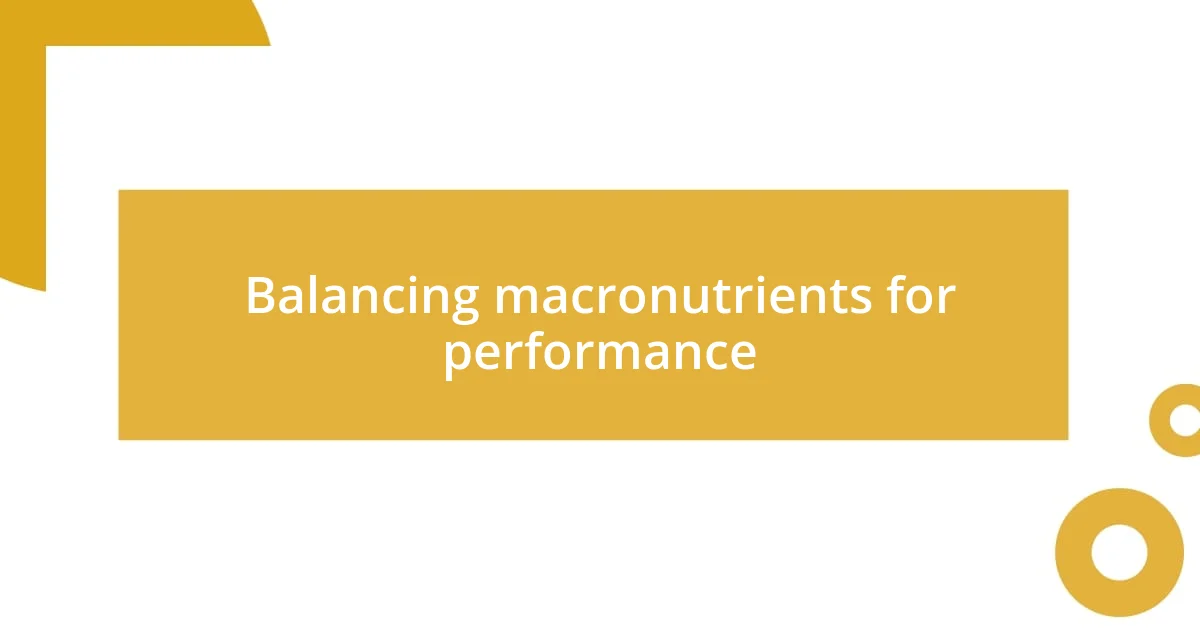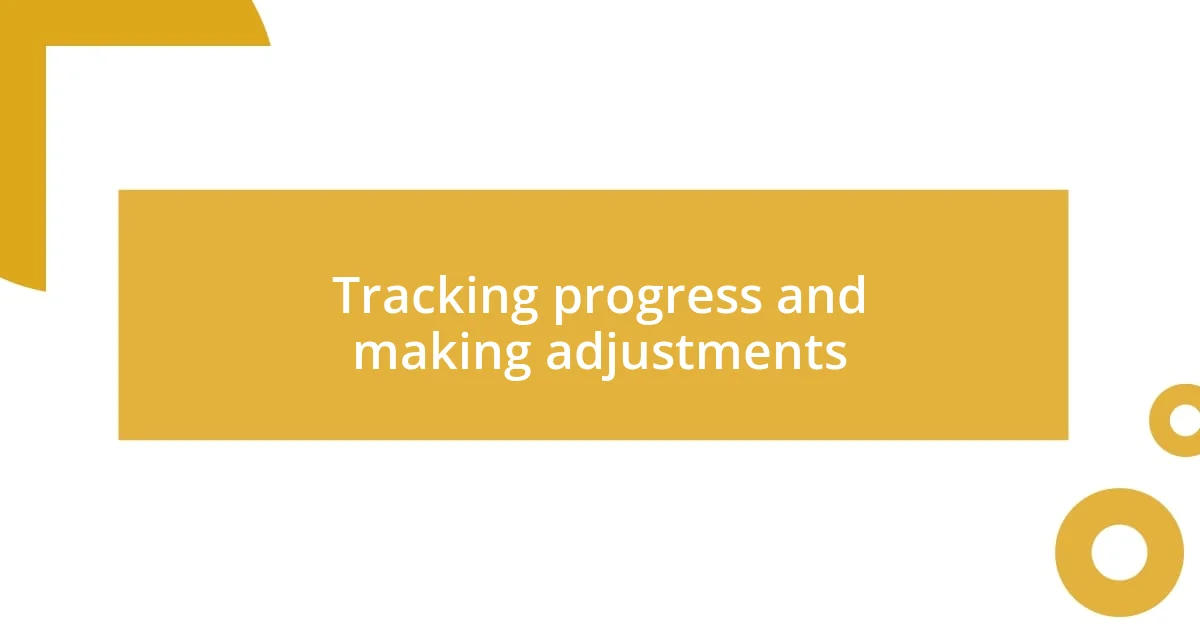Key takeaways:
- The author’s shift to a healthier diet highlighted the importance of energy for mood and productivity, prompting a quest for sustainable energy sources through food choices.
- Identifying energy-draining foods, such as sugary snacks and refined carbs, led to better dietary decisions, while incorporating nutrient-dense alternatives significantly boosted energy levels.
- Tracking progress helped the author recognize patterns in energy fluctuations, enabling effective adjustments to improve overall well-being and performance through balanced macronutrients.

Understanding the need for energy
Having energy is like having the fuel that keeps our daily engines running. When I made the shift to a healthier lifestyle, I realized just how pivotal energy is to my mood and productivity. There were days when fatigue would hug me tight, making even simple tasks feel monumental. It’s a struggle many of us know, right?
Thinking back, I remember a time when a 3 PM slump would hit me like a ton of bricks. I’d find myself reaching for sugary snacks, which offered a quick lift but left me crashing hard soon after. I couldn’t help but wonder, what if I could find a more sustainable way to stay energized in the long run? This realization sparked my journey toward understanding how my diet could empower me instead of dragging me down.
Our bodies require energy not just for physical tasks but also for mental clarity and emotional well-being. I’ve learned that the right fuel can enhance focus during my work hours and uplift my spirits throughout the day. When you consider how much we juggle each day, doesn’t it make sense to prioritize our energy sources?

Identifying energy draining foods
When it comes to identifying energy-draining foods, I’ve discovered that not all calories are created equal. For instance, I used to start my mornings with a sugary breakfast cereal that promised quick energy. However, I quickly learned that the spike in blood sugar led to a sharp crash shortly after, leaving me feeling sluggish and irritable. It was a tough lesson, but recognizing the impact of these kinds of foods helped me make better choices.
Sometimes, I find myself craving comfort foods like pasta or bread—a familiar indulgence. But, I’ve noticed that refined carbs tend to leave me feeling bloated and lethargic. In stark contrast, meals rich in whole grains have a positive effect on my energy levels. So, I’ve come to appreciate how a simple change in my carb choices can sustain my energy throughout the day.
Another surprising culprit for me was caffeine. Initially, I believed that my coffee habit was a harmless energy booster. Yet, I found that too much caffeine led to anxiety and disrupted sleep patterns, ultimately draining my energy even more. It’s fascinating how these seemingly benign foods and habits can sneak into our diets and have such profound effects on our energy levels if we don’t actively evaluate them.
| Food Type | Effect on Energy |
|---|---|
| Sugary Snacks | Quick boost followed by a crash |
| Refined Carbohydrates | May cause bloating and lethargy |
| Excessive Caffeine | Potentially leads to anxiety and sleep disruption |

Choosing nutrient dense alternatives
When I started to incorporate nutrient-dense alternatives into my diet, the change was practically electrifying. I replaced my go-to snacks with options like nuts and fruits, and the difference in my energy levels was astonishing. For example, instead of choosing a bag of chips, I now reach for a handful of almonds, which not only satisfy my cravings but also keep me alert and energized for longer periods.
Here’s a quick look at some nutrient-dense alternatives I’ve embraced:
- Quinoa instead of white rice: Packed with protein and fiber, it fuels me better and keeps me full longer.
- Sweet potatoes in place of regular potatoes: They offer a wealth of vitamins and a slower release of energy, perfect for those busy afternoons.
- Leafy greens instead of iceberg lettuce: Spinach and kale are nutrient powerhouses that boost my iron and overall vitality.
- Greek yogurt instead of regular yogurt: It contains more protein, which helps maintain my energy levels throughout the day.
Shifting my focus to whole, nutrient-rich foods has truly transformed my relationship with food. It’s about finding joy in what I eat; rather than feeling guilt after snacking, I now savor every bite of a bright berry or a crunchy carrot. This newfound approach has made my meals not just sustenance, but a celebration of vibrant energy.

Incorporating whole foods into meals
Incorporating whole foods into my meals has been a game changer. I remember the first time I swapped out pre-packaged meals for something homemade with whole ingredients. The vibrant colors and fresh aromas filled my kitchen, and I felt excited, even proud. Just the simple act of cooking with whole foods ignited a sense of enjoyment I hadn’t connected with food in a long time. Have you ever felt that rush of joy from creating a meal?
One of my go-to strategies is adding more vegetables to every meal. For instance, I started piling roasted broccoli, bell peppers, and zucchini onto my plate instead of my usual heavy grains. It wasn’t just about getting my greens; it transformed my entire plate into a canvas of flavors. I could feel the energy coursing through me after meals rich with these nutrients. The texture, the crunch, and the burst of flavor created an experience that satisfied not only my hunger but also my soul.
I also found that incorporating whole foods changed how I thought about snacks. Instead of munching on a handful of processed crackers, I often reach for sliced cucumbers and hummus or a colorful fruit salad. This shift made snacking feel less like mindless eating and more like a refreshing treat. How can a snack be fulfilling? I believe it’s all about choosing foods that nourish rather than merely fill. Each crunchy bite gives me a quick energy boost without the guilt, and honestly, I enjoy watching those vibrant colors brighten my day.

Balancing macronutrients for performance
Finding the right balance of macronutrients has played a pivotal role in boosting my energy levels and overall performance. I’ve learned that not all carbohydrates are created equal. For example, I used to think that any form of carbs would give me a quick energy boost, but I soon realized that complex carbs, like whole grains and legumes, provide a steadier release of energy. It was enlightening to switch from processed white bread to whole grain options; the sustained energy was a pleasant surprise, allowing me to power through my workouts without that dreaded post-carb crash.
Protein has also become a crucial player in my diet. Initially, I didn’t pay much attention to how much protein I was consuming, but incorporating lean meats, legumes, and plant-based options has made all the difference. There was a day I challenged myself to assess my meals and noticed that a simple addition of grilled chicken to my salad transformed it into a fulfilling dish that kept me satisfied for hours. It got me thinking—how often do we overlook the significance of protein in our meals? For me, that extra dose of protein not only kept my energy steady, but it also helped with muscle recovery after intense workouts.
Fats are another essential piece of the puzzle. Healthy fats, like those from avocados and olive oil, have become staples in my meals. I remember feeling a change in my energy levels when I started drizzling olive oil on my roasted vegetables instead of reaching for less healthy options. It’s amazing how a little bit of healthy fat can enhance flavors and provide lasting energy. Have you ever noticed how much better you feel after eating a well-rounded meal? Balancing my macronutrients has not only fueled my body but has also turned eating into an enjoyable experience, one that truly energizes me for the day ahead.

Tracking progress and making adjustments
When I first started tracking my progress, I used a simple app to log my meals and energy levels. Initially, I found it tedious, but over time, it became enlightening. I began to see patterns—on days when I skipped breakfast, my energy plummeted by the afternoon. Have you ever noticed how a well-timed meal can change your entire day?
As I collected data, it struck me how minor tweaks could lead to significant shifts. For instance, I experimented with swapping out evening snacks for a handful of nuts instead of my regular chips. The result? Not only did I feel more satisfied, but I also noticed I woke up less sluggish. What changes have you made that surprised you in the long run?
Having tangible evidence of how my diet impacted my energy also made it easier to adjust when needed. If I found myself dragging mid-afternoon, I’d look back at those logs. Maybe it was a day low in healthy fats, or perhaps I hadn’t eaten enough fruits. Reflecting on my tracking not only informed my food choices but also created a sense of accountability and empowerment. Do you think tracking your progress could offer you similar insights?















